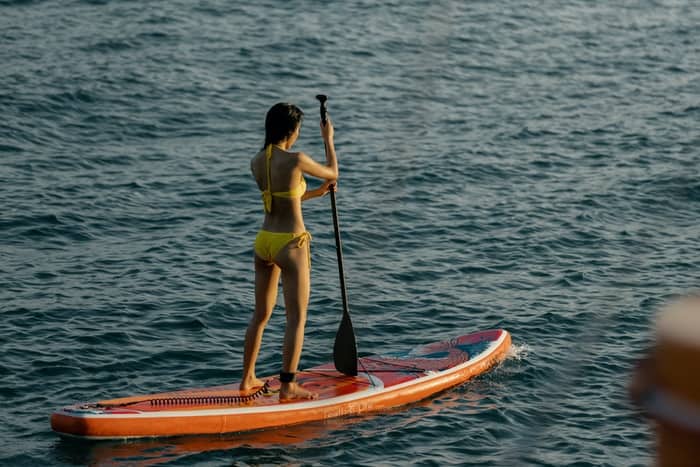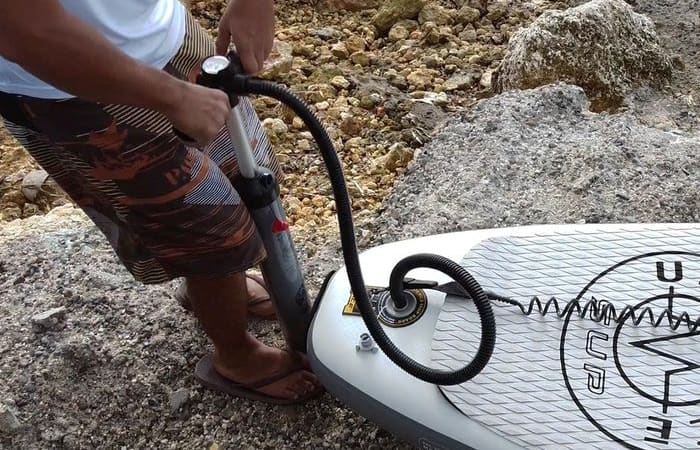Inflatable paddle boards (IPBs) have been on the rise in popularity the past few years. Solid paddle boards (SPBs) have been the standard for many years. So, which one is better? This is a question that can be asked by many people, as both have their own pros and cons.

What Is Inflatable Paddle Boards
Inflatable paddle boards, also known as iSUPs, are a type of paddle board that is inflated with air. This type of board is often used for recreational activities such as paddle boarding, surfing, and kayaking. Inflatable paddle boards are made of durable materials that can withstand the wear and tear of these activities.
They are also lightweight and easy to transport, making them a popular choice for those who want to enjoy water sports without having to lug around a large Board.

Pros of Inflatable Paddle Boards
The advantage of inflatable paddle boards is that they’re incredibly easy to transport. You can deflate them and fit them into a small carrying case, which makes them perfect for taking on trips. Hard boards, on the other hand, can be cumbersome and difficult to transport.
Inflatable paddle boards are also less expensive than their hard board counterparts. You can buy a paddle board for as little as $60 and enjoy all the same fun that you’d get from a hard board.
Fun Outdoor Quiz
Cons of Inflatable Paddle Boards
Inflatable paddle boards offer a number of advantages over their hard-shell counterparts. They’re lighter, take up less space, and are easier to transport. But they also have some drawbacks.
The drawbacks of inflatable paddle boards are they’re not as sturdy as hard-shell boards. Inflatable boards can be punctured, and if the puncture is large enough, the board will deflate and be unusable. Second, they can be more difficult to paddle on than hard-shell boards. Third, they can be more expensive than hard-shell boards. Finally, they often don’t come with a paddle or a leash, which you may need to purchase separately.
What is Solid Paddle Boards
Solid paddle boards are the newest craze in paddle boarding. They are made of a solid piece of fiberglass or plastic, which makes them incredibly stable and durable. Because they are so stable, they are perfect for beginners or anyone who wants to just relax and enjoy a peaceful paddle boarding experience. Solid paddle boards also track better than traditional inflatable paddle boards, so you can cover more distance with each stroke.

Pros of Solid Paddle Boards
Solid paddle boards are growing in popularity for a variety of reasons. They are typically more affordable than inflatable paddle boards, and they offer a more stable and sturdy experience when paddling. Additionally, because they are made of a solid piece of wood or plastic, they tend to be more durable than inflatable boards. This makes them a good option for those who plan to use their board frequently or in rougher conditions.
Cons of Solid Paddle Boards
While there are many pros to these boards, there are also a few cons that should be considered before making a purchase.
The first con of solid paddle boards is their price tag. They can be quite expensive, especially compared to the inflatable variety. This is because they are made of high-quality materials and require more labor to construct.
Another downside to solid paddle boards is their weight. They tend to be much heavier than inflatables, which can make them difficult to transport and store. This may not be an issue for those who have a place to keep their board, but it can be a problem for those who don’t.
Finally, solid paddle boards are often less maneuverable than inflatables.
Conclusion
In conclusion, there are many factors to consider when purchasing a paddle board. Inflatable boards offer some advantages over solid boards, such as portability and durability. However, solid boards are often faster and provide a more stable ride. Ultimately, the decision depends on the individual’s needs and preferences.









